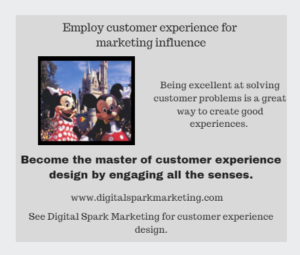Understatement time: Marketing has changed a ton in the last five years. Social media’s power to drive campaign success into uncharted territory has resulted in a massive shift in content marketing. The best campaigns have capitalized on the elements that make almost every marketing campaign a success.
Stop interrupting what people are interested in, and be what people are interested in.
Below, we’ve taken five of the best marketing campaigns, and have broken down key elements that contributed to their explosive success. Although some of these marketing campaigns were created by the biggest companies and agencies in the world, they succeeded not because of how much they cost, but because they understood fundamental truths about social media users.
Play to people’s emotions.
When I saw my boss cry when watching the ad, I knew it was going to perform well. Emotional stimuli, happiness, sadness, inspiration, anger and beyond, have been proven to activate the human nervous system and boost social transmission. In other words, if you can cause an emotional reaction in people, they’re far more likely to share your content.
This notion is clear when you look at what gets shared online. Go to a website like Upworthy or any other content aggregator and see what gets the most attention. It’s stories about unlikely heros, or videos of soldiers coming back from war and surprising their families, or stories of people and their pets. These videos, to use an internet expression, catch us ‘right in the feels’ and that’s why they succeed. Brands should be striving to make that same impression, and WestJet is proof as to why.
The airline also made their service a secondary element of the ad, which might seem counterintuitive to many brands but can actually pay off big time on social media. Many people are inherently hesitant to share brand-heavy content on social networks.
Use many channels … with new ways to communicate
Ignore conventional marketing. Instead be unique and memorable.
Old Spice didn’t just bend conventional marketing practices, they avoided them entirely, creating something far more impressive in the process. You wanted to play the video again and again to try and see how it was accomplished. You wanted to show it to friends and talk about it. It was so interesting and shareable that brands have been chasing this model ever since it aired.
Then, they did something even smarter. They created the response campaign to bring their viewers into the experience. Everyone who loved the ad had the opportunity to be a part of it. Users flocked to submit questions in the hopes for a direct interaction with the Old Spice Man.
Know your audience and cater ads to their interests.
Consider competitiveness … talking about REAL differences with competing offers … the value proposition
Differentiate and include audience
People love to be a part of something popular or viral. It’s like being part of a studio audience or being mentioned by a celebrity on Twitter. Not only is the experience enjoyable for them, it’s also something they want to share with their friends and followers. By creating these personalized videos, Old Spice turned a successful brand video into a shareable social media campaign.
Utilize creativity … inventing new ways to talk about products and services
Use humor.
Provide useful content … with meaning and relevance, not just entertainment value
Take risks.
With social media, users are empowered to skip over any ad they don’t find interesting. This puts the onus on brands to somehow catch people off guardor otherwise keep their attention. Humor is one of the most effective ways to do that.
Much like with Old Spice, K-Mart used humor in a way that you might not have expected from their brand. While it’s easy to call it juvenile, the results speak for themselves. The humor made the video so shareable that more people shared it on Facebook than commented on it. That type of engagement is invaluable of the brand.
This marketing campaign was also special because it was a risk. It wasn’t just a risk for K-Mart, it was a risk for any brand. Swear words and childish jokes isn’t something most retail brands would strive to be associated with. But social media is about creating discussion. Safe bets don’t create discussion, risks do. K-Mart put themselves out there and social media users appreciated the humor and the risk. They took a chance and it paid off.
Support a meaningful cause and share it with your audience.
So what are the main lessons to draw from the Always marketing campaign? Put your company behind a cause. Try to start a movement.
Always is working to become synonymous with women’s empowerment. This is their cause, and the basis of their ad. Again their product was put to the side, but where WestJet did it to focus on their customers, Always focused on the ‘greater good.’
Find a cause or a message that your business believes in. This is important: don’t just support it for an easy marketing win. Actually throw your company behind the cause. Raise awareness, fundraise, co-market with existing organizations that have taken on the cause. Looking like you support a cause isn’t enough, and can actually be damaging to your brand. You need to follow through. Always, for example, partners with UNESCO to support education for women across the world.
And the #LikeAGirl ad wasn’t just an ad, it was a call to action. In the same way that Old Spice succeeded by involving fans in their YouTube campaign, Always succeeded by making people want to join their #LikeAGirl movement. Athletes and businesses jumped onto the hashtag and threw their weight behind the movement, spreading the campaign even further.
This works for the same reason people latched on to the Ice Bucket Challenge. These movements are inclusive; they make you feel like a part of something good. All humans have a desire to be included and make a difference. If your brand can start a movement like Always was able to do, the positive impact on your brand will be substantial.
Clarity beyond the marketing … focusing on the business behind the marketing
Of course there are marketing formulas that have been proven to work time and time again:
.
Call to action … the most important factor … leaving behind value when the marketing is done
Awesome consumer targeting
Dollar Shave Club isn’t just marketing to men of shaving age; they’re marketing to tech-savvy younger men, the audience most likely open to buying razors online. “Young men” is written all over the video. There are toys in the background. They swear and use humor. There’s a machete. They make fun of tennis. It ends with a party. This isn’t an energy drink ad. There aren’t explosions and extreme sports. But it nails the target demographic in a simple, straightforward way. People often talk about targeting on social media. You can target your content once it’s created, or you can target it from the outset. Doing the latter made this video into a hit.
What about distinguishing their brand? Did you notice, there isn’t a single image of anyone actually using the razor in the video. Why wouldn’t they show the razor in use? Maybe because they know (correctly) assumed that men wouldn’t be sold on how the razor looks while in use, especially since it will essentially look the same as every other razor. They narrowed in on the elements that distinguished their product from every other similar product: the price and delivery method.



